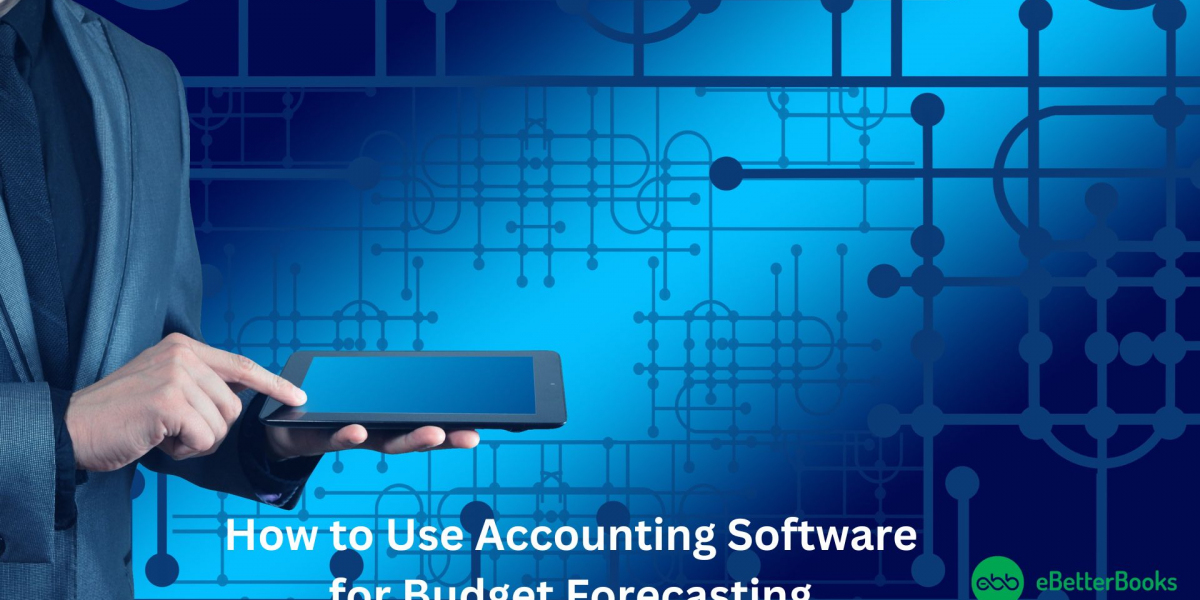Financial forecasting is the process of estimating future financial outcomes for a business or project. It involves predicting revenues, expenses, and cash flows based on historical data, industry trends, and economic conditions. Accurate financial forecasts are crucial for businesses to plan budgets, manage resources, and navigate uncertainties.
What is Financial Forecasting?
Financial forecasting is a vital aspect of financial planning that helps companies anticipate future performance. By examining patterns in historical financial data, businesses can estimate future earnings, costs, and cash flow, helping them to set realistic goals and make informed decisions.
Importance of Financial Forecasting
The importance of financial forecasting cannot be overstated. It enables businesses to:
- Prepare for potential cash shortfalls.
- Set measurable financial targets.
- Guide strategic decision-making.
- Plan for investments and expansions.
Key Components of a Financial Forecast
A financial forecast typically includes:
- Revenue projections – Forecasting future sales or income.
- Expense projections – Estimating operating costs.
- Cash flow forecasts – Projecting cash inflows and outflows.
- Profit and loss projections – Anticipating net income after expenses.
Challenges in Manual Financial Forecasting
Although financial forecasting is essential, manual forecasting poses several challenges. Manual processes rely heavily on spreadsheets, human input, and historical data, which can lead to inefficiencies.
Time-Intensive and Laborious Processes
Manual forecasting requires the continuous input of data, calculations, and adjustments. This process is time-consuming and takes up valuable resources that could be better spent on strategic planning.
Human Errors and Inconsistencies
Human involvement increases the likelihood of errors such as incorrect data entry, miscalculations, or outdated data being used. These errors can significantly affect the accuracy of forecasts, leading to poor decision-making.
Limited Scalability
As businesses grow, the complexity of their financial operations increases. Manual forecasting struggles to keep pace with large datasets and more intricate financial models, making it difficult to scale up efficiently.
What is Automated Financial Forecasting?
Automated financial forecasting uses technology such as machine learning algorithms, artificial intelligence (AI), and predictive analytics to streamline and improve the forecasting process.
Definition of Automated Financial Forecasting
Automated financial forecasting involves using software to gather, process, and analyze financial data without extensive human intervention. The system can predict future financial outcomes based on trends, patterns, and external factors.
How It Differs from Manual Forecasting
Unlike manual forecasting, automation allows for real-time data analysis, dynamic model adjustments, and faster, more accurate predictions. It reduces the risk of human error and can manage complex financial models with ease.
Why Businesses Need It
Automation improves efficiency, accuracy, and scalability. With automated forecasting, businesses can make quicker, data-driven decisions that align with market conditions, resulting in better financial performance.
Benefits of Automating Financial Forecasting
The benefits of automating financial forecasting go far beyond time savings. It can transform a business's financial management practices by providing more precise insights and boosting overall efficiency.
Increased Accuracy and Reliability
Automated systems rely on real-time data and sophisticated algorithms, reducing the likelihood of errors and improving the reliability of the forecasts.
Enhanced Efficiency and Time Savings
By automating data collection and analysis, businesses save time, allowing finance teams to focus on strategic initiatives rather than repetitive tasks.
Real-Time Data and Analytics
Automation enables businesses to access up-to-date information at any moment, helping them adjust forecasts quickly in response to market changes or operational shifts.
Improved Decision-Making
Automated forecasting provides in-depth insights and predictive analytics, allowing businesses to make more informed decisions based on comprehensive data analysis.
Key Tools and Technologies for Automation
There are several tools and technologies available to automate financial forecasting. Each tool offers different features, and the right solution depends on a business's unique needs.
AI and Machine Learning
Artificial intelligence and machine learning are at the core of automated financial forecasting. These technologies analyze past data to identify patterns and predict future financial trends.
Predictive Analytics
Predictive analytics helps businesses make data-driven decisions by forecasting future events based on historical data. It uses statistical models and machine learning to assess potential outcomes.
Data Integration Platforms
Data integration tools allow businesses to centralize their data from multiple sources. This ensures that financial forecasts are based on a comprehensive data set, improving accuracy.
Cloud-Based Solutions
Cloud-based financial forecasting tools provide scalability, flexibility, and real-time data access. They also offer enhanced security and compliance features, making them ideal for businesses of all sizes.
Steps to Automate Financial Forecasting
Automating financial forecasting can be a complex process, but with the right approach, businesses can achieve seamless integration.
Assessing Current Forecasting Processes
The first step in automation is to evaluate the current manual processes. Identifying bottlenecks and inefficiencies can help pinpoint areas where automation will have the most significant impact.
Selecting the Right Tools and Software
Businesses should select tools that align with their specific forecasting needs. Consider features such as integration capabilities, scalability, and user-friendliness.
Integrating Automation Tools with Existing Systems
Integration is key to ensuring that the new automated tools work harmoniously with existing financial and operational systems. APIs and data connectors can facilitate smooth integration.
Training and Skill Development
To fully leverage automated forecasting tools, businesses must train their staff. This ensures that finance teams are equipped with the necessary skills to interpret data and use the tools effectively.
Setting Up Automation Workflows
Automation workflows are the backbone of automated financial forecasting. They allow businesses to streamline data inputs, customize models, and collect data automatically.
Defining Data Inputs
Before automating, businesses must define the types of data that will be used in forecasting. This may include sales data, operating expenses, and macroeconomic factors.
Customizing Forecasting Models
Automated tools allow businesses to create custom forecasting models tailored to their unique needs. These models can be adjusted to account for changing market conditions or new business goals.
Automating Data Collection
One of the primary advantages of automation is that data collection becomes an automatic process. This reduces the need for manual input, ensuring that forecasts are based on the most recent and accurate data.
How AI Enhances Financial Forecasting
Artificial intelligence is transforming financial forecasting by enhancing accuracy and enabling more complex analyses.
Role of Artificial Intelligence in Improving Accuracy
AI improves the accuracy of forecasts by analyzing large datasets quickly and detecting patterns that may not be visible to human analysts.
Machine Learning Algorithms for Trend Analysis
Machine learning algorithms are designed to identify and analyze trends in financial data. These algorithms can continuously learn from new data, making predictions more accurate over time.
Predictive Capabilities of AI in Financial Forecasting
AI can predict potential future financial outcomes based on current and historical data, helping businesses make proactive decisions to achieve their financial goals.
Cloud Solutions for Financial Forecasting
Cloud-based financial forecasting solutions are becoming increasingly popular due to their flexibility and real-time capabilities.
Benefits of Cloud-Based Forecasting
Cloud-based solutions allow businesses to scale their forecasting efforts, access data from anywhere, and ensure data security with automatic backups and updates.
Popular Cloud Solutions for Financial Forecasting
Some of the top cloud-based financial forecasting tools include:
- Adaptive Insights – A flexible, user-friendly platform.
- Anaplan – Known for its advanced analytics capabilities.
- Oracle NetSuite – A comprehensive financial planning tool.
Data Security and Compliance Considerations
While cloud solutions offer many benefits, businesses must ensure that the platforms they choose comply with data security regulations such as GDPR and SOC 2.
Click here: Benefits of Multi-Currency Accounting Software
Data Integration in Financial Forecasting
Data integration plays a crucial role in financial forecasting by ensuring that all relevant data is accessible and accurate.
Importance of Integrating Financial and Operational Data
By integrating financial data with operational data, businesses can create more comprehensive and accurate forecasts. This includes data from sales, marketing, and supply chain operations.
Using APIs and Data Connectors
APIs and data connectors make it easier to integrate data from various sources, ensuring that the forecasting process is seamless and that all necessary information is included.
Real-Time Data Synchronization
Real-time data synchronization ensures that the data used in financial forecasts is always up-to-date, providing businesses with accurate and actionable insights.
Automating Scenario Planning
Scenario planning is a critical aspect of financial forecasting, allowing businesses to model different financial outcomes based on various assumptions.
Role of Automation in Creating Scenario Models
Automation simplifies the creation of multiple scenario models by quickly adjusting variables and predicting how they will affect financial outcomes.
Adjusting Forecasts Based on Market Conditions
Automated tools can instantly adjust forecasts to reflect changing market conditions, giving businesses the flexibility to pivot as needed.
Predictive Analytics for Financial Forecasting
Predictive analytics is a powerful tool for financial forecasting, allowing businesses to anticipate future trends and make proactive decisions.
How Predictive Analytics Forecasts Future Trends
Predictive analytics uses statistical models and machine learning to analyze historical data and forecast future events, such as sales trends or market fluctuations.
Data-Driven Decision-Making with Predictive Analytics
By leveraging predictive analytics, businesses can make more informed decisions based on data rather than intuition or guesswork.
Overcoming Common Automation Challenges
While automating financial forecasting offers many benefits, businesses may encounter some challenges along the way.
Data Quality and Consistency
Automation relies on high-quality, consistent data. Inaccurate or incomplete data can lead to faulty forecasts, so businesses must prioritize data governance.
Resistance to Change Within Organizations
Some employees may resist automation due to fear of job loss or unfamiliarity with new technologies. Addressing these concerns through training and communication is essential.
Managing Software Costs
The initial costs of automation tools can be high. Businesses must carefully evaluate the return on investment (ROI) to ensure that the benefits outweigh the expenses.
Best Practices for Automating Financial Forecasting
To maximize the benefits of automated financial forecasting, businesses should follow several best practices.
Regularly Updating Forecasting Models
Financial forecasts should be regularly updated to reflect the latest data and market trends. Automation tools make it easy to update models in real-time.
Ensuring Data Governance and Security
Data security is critical in financial statements. Businesses must ensure that their automation tools comply with data protection regulations and maintain strict data governance protocols.
Collaboration Between Finance and IT Teams
Collaboration between finance and IT teams is essential for successful automation. IT teams can assist with the technical aspects of automation, while finance teams provide the necessary financial expertise.
Conclusion and Future of Financial Forecasting
Automating financial forecasting is no longer a luxury—it’s a necessity for businesses looking to stay competitive in today’s fast-paced environment.
How Automation Will Evolve in Financial Forecasting
As technology continues to advance, the role of automation in financial forecasting will become even more significant. AI and machine learning will continue to improve the accuracy and efficiency of forecasts, while cloud-based solutions will offer greater flexibility.
Future Trends and Innovations
Future trends in automated financial forecasting include the increased use of real-time data analytics, enhanced AI capabilities, and the integration of blockchain technology for secure data management.
Final Thoughts and Recommendations
Businesses that invest in automating financial forecasting today will be better equipped to navigate uncertainties and achieve long-term success. By following best practices and embracing the latest technologies, companies can streamline their forecasting processes and improve overall financial performance.
Frequently Asked Questions (FAQs)
What is financial forecasting automation?
Financial forecasting automation refers to the use of technology, such as AI and machine learning, to streamline the process of predicting future financial outcomes.
What are the benefits of automating financial forecasting?
Automation improves accuracy, saves time, enables real-time data analysis, and enhances decision-making capabilities.
What tools are commonly used for automating financial forecasting?
Popular tools include AI and machine learning platforms, predictive analytics tools, data integration platforms, and cloud-based financial planning software.
How does AI improve financial forecasting?
AI enhances financial forecasting by analyzing large datasets, identifying trends, and predicting future financial outcomes with greater accuracy.
What are the challenges of automating financial forecasting?
Challenges include ensuring data quality, overcoming resistance to change within organizations, and managing software costs.
What is the future of financial forecasting automation?
The future includes more advanced AI capabilities, real-time data analytics, and the integration of new technologies like blockchain for secure data management.









